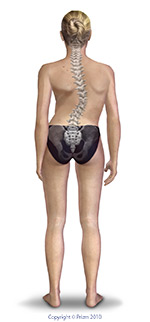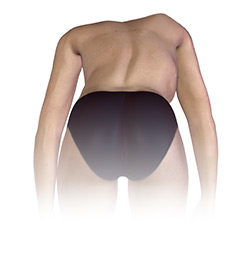Adult Scoliosis
Adult scoliosis relates to anyone that has scoliosis and is eighteen or older. Adult scoliosis is different from children scoliosis cases in that adults are skeletally mature and may have  different treatment options. Scoliosis in adults is usually accompanied with back pain and that is why they choose to get themselves evaluated. Treatment difficulties for the spine surgeon may exist since adult scoliosis can cause the spine to become stiff. In many cases, advanced disc degeneration that can create severe pain is accompanied with the scoliosis. Many patients with adult scoliosis may experience osteoporosis, which can play a contributing factor. All of these factors add into the equation of what treatment is right for the patient.
different treatment options. Scoliosis in adults is usually accompanied with back pain and that is why they choose to get themselves evaluated. Treatment difficulties for the spine surgeon may exist since adult scoliosis can cause the spine to become stiff. In many cases, advanced disc degeneration that can create severe pain is accompanied with the scoliosis. Many patients with adult scoliosis may experience osteoporosis, which can play a contributing factor. All of these factors add into the equation of what treatment is right for the patient.
Degenerative scoliosis is one of the most common types of scoliosis for older adults and may progress. This type of scoliosis is usually associated with stenosis and leg pain. Most treatment for adult scoliosis is non-operative. Conservative treatment options may include physical therapy or injection therapy.
A spine specialist will put together a treatment program consisting of exercise and conditioning to help the patient increase function and energy, while trying to reduce pain. Steroid injections may also be used to help reduce pain. Bracing is rarely used in adults as it rarely helps with pain relief.
Surgery is recommended for curvatures that are worsening or when previous treatment options have been exhausted. It is not uncommon in adult scoliosis cases when discs are severely degenerated, which require the spinal fusion to be extended down to the sacrum. This situation may require the surgeon to perform the surgery on both your back and front side.
Thankfully, new options in minimally invasive scoliosis enable a surgeon to make several smaller incisions rather than a single long incision. Special instruments are inserted through the portals to untwist the scoliotic spine. Recovery is much faster and much less painful as there is less disruption to muscles, tendons and ligaments.
The length of the recovery depends on how the nature of the surgery and the age of the patient. Some patients will be back to full activity in three months, and some patients may need as long as six to nine months to properly heal. Many patients become thrilled and happy knowing the pain they suffered with is no longer going to bother them.
About Adults with Previous Operated Scoliosis
Often older techniques such as anterior surgery for lumbar scoliosis, Harrington rods, or Cotrel-Dubousset instrumentation may have long fusions with minimal correction or they were fused in some kyphosis.
With time and aging, these individuals may develop progressive disc degeneration resulting in a stooping or flatback syndrome, or back and leg pain from degeneration. Other causes of back pain in a previously operated patient include deformities or non-unions with broken rods.
Dr. Michael Rohan, Jr. is a board certified orthopedic surgeon who is fellowship-trained in spine surgery, the highest level of medical education in the U.S. For over 10 years, Dr. Michael Rohan, Jr. had a prominent spine center on the Florida Gulf Coast with offices in Panama City and Destin before expanding his practice to Northeast Florida with a new spine care location in Middleburg in Clay County, a suburb of Jacksonville in Northern Florida. The Jacksonville practice location is convenient to patients from other cities like St. Augustine, Gainesville, Palm Coast, Daytona Beach and Duval County.
Appointments & Referrals
Phone: 904-204-5000
Make an Appointment
Website Design & All Educational Content © Copyright 2025 Prizm Development, Inc. Developing Centers of Excellence for Better Healthcare. Prizm is the most experienced developer of spine center, joint replacement centers and pain centers in the U.S. with content-rich educational web sites for spine surgeons, neurosurgeons, orthopaedic surgeons and pain management physicians.



